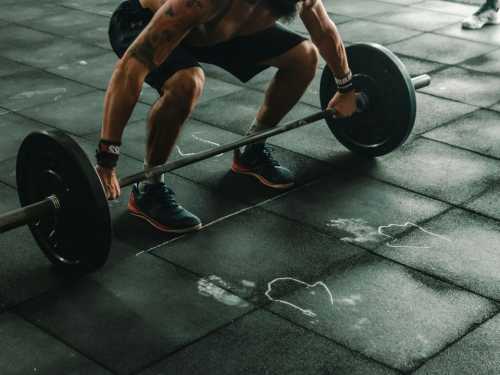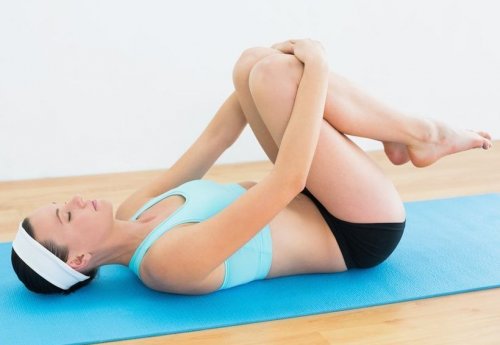
What is an ACL? It’s one of the most important ligaments in the body if you play any kind of sport – crucial for pivoting movement, for moving off to sprint and for landing .
These are all key elements in sports like football, netball, rugby, basketball… the list can go on and on!
ACL stands for Anterior Cruciate Ligament, and it is situated within our knees, a short, thick, powerful ligament about the length of a little finger that’s attached to our thigh bone and our shin bone. When it tears or ruptures it is a devastating injury.
And devastating is not an exaggeration. Just over a year ago, I met a couple of orthopaedic surgeons called Nev Davies and Will Jackson. They were fed up. Fed up with operating on teenagers, girls and boys. Fed up with doing ACL knee reconstruction surgery on kids. With the help of numerous other medical colleagues who were also concerned about what they viewed as a “seismic” rise in teenage ACL injuries they crunched the figures and came back with an alarming stat.
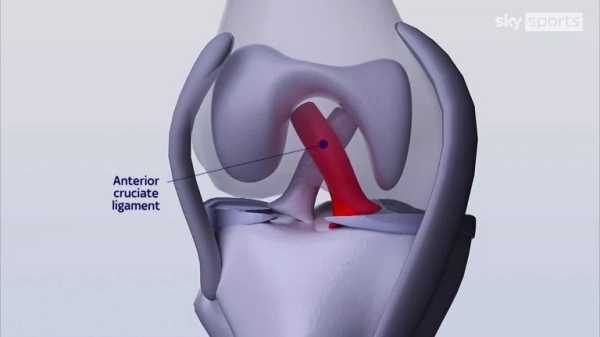
Surgeon Nev Davies explains where the anterior cruciate ligament (ACL) is and why surgery is often needed
Compared to just over 20 years ago, for every ACL knee reconstruction operation the surgeons were doing, now they are doing 29 – 29 times more operations to repair an ACL!
Trending
- Transfer Centre LIVE! Zaha, Rice, Palhinha latest
- Papers: Gerrard set to return to management in Saudi Arabia
- Mbappe won’t trigger PSG extension | Forward could leave this summer
- Man Utd unlikely to go for Kane | Contacts made about Hojlund
- Jokic’s Nuggets clinch first NBA title with win over Heat
- ACL injuries: The ‘staggering’ teenage crisis
- Man Utd to make formal bid for Mount | Long-standing interest in Caicedo
- Man Utd transfers: Maguire exit ramped up amid Kim interest
- Smith: I thought merger news ‘was kind of a joke’
- McIlroy grouped with Koepka at US Open
- Video
- Latest News
Davies, a consultant orthopaedic surgeon at the NHS Royal Berkshire Hospital in Reading, said: “Without doubt, every year we seem to be seeing more and more young people coming through with significant knee injuries and primarily ACL ruptures. The numbers are staggering and extremely worrying. For every one person who was having an ACL reconstruction in the late 1990s, there are now 29 children having those surgeries.
Datawrapper Due to your consent preferences, you’re not able to view this. Open Privacy Options
- Leah Williamson’s World Cup dream ended by ACL injury
- Beth Mead hopeful of making World Cup after ACL injury
Davies isn’t the only medical professional alarmed by the rise he is seeing. Others have also noticed and at conferences and seminars they have met and discussed their concerns coming together to try and raise awareness. Professor Stefan Kluzek, an associate in sports medicine at Nottingham University, splits his busy clinical and academic professional career between Oxford and Nottingham. He told Sky Sports: “We increased by 29-fold the number of operations. Devastating injuries that can cause complete change of the life trajectory and the early onset of arthritis.”
Also See:
The figure of a 29-time increase in teenage ACL injuries is often difficult to comprehend unless you, a family member or friend has been affected. At Ryland Netball Club in Bromsgrove just to the south of Birmingham, ACL injury in teens wasn’t a huge shock. The club is thriving at junior and senior level, well run and takes the care of their members seriously yet many of their players had suffered an ACL injury.
Player and youth coach Caitlin Hillier explained she ruptured her ACL after an awkward landing. “My leg just went back and ‘pop’. Up until then I hadn’t really known much about what an ACL was, but since then I know and I’m trying to be more aware about what the body needs before playing sport, either training or playing. I think as a club we are becoming more aware, but lots of the girls (players) have had ACL injuries.”
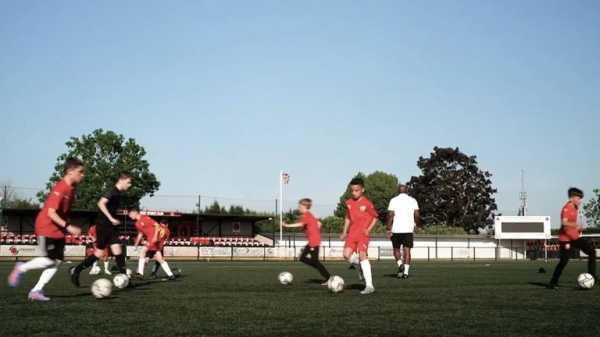
Image: Kids training at Bedfont Sports Club in West London where coaches emphasise the importance of warm-ups and injury prevention
Footballers also suffer from ACL injuries, we’ve seen it recently within the women’s elite game with terrible ACL injuries suffered by Beth Mead and Leah Williamson, but ACL injuries aren’t limited to girls and women. Lee Taylor is an U11s coach at Bedfont Sports Club in west London, he’s an ex-pro having played for Shrewsbury Town and been on the books of Fulham and Luton. Lee’s professional background is a godsend for the grassroots game, he’s so aware of preparing properly for either a training session or a match, but always wary of injury to any of his young players. The rise in ACL injuries among young sportsmen and women wasn’t what he was expecting.
“A little bit surprised because you hope that people look after themselves and actually prepare right to look after their bodies,” he said. “But then football is so popular now with people playing everywhere so I guess the game has never been as big as it is, but it’s not good is it, it’s quite frightening.”
So why is this happening? “People are committing to one or two sports at most it appears at the moment if they are going to play within their local community and they spend less time developing other skills which would be naturally developed when they are participating in multiple sports,” Kluzek explained. “They are also in front of screens a lot more away from (organised) sport so not moving around as other generations had been.”
Datawrapper Due to your consent preferences, you’re not able to view this. Open Privacy Options
Davies added: “They are on screens, sedentary and suddenly they are in very organised, highly competitive sports environments. There is some evidence about sports specialisation, so if you have a child who is good at one sport they might be pushed down that route and only play that sport.
“The second biggest reason is that there is a huge knowledge gap in the UK about the importance of injury prevention programmes and the importance of warming up kids. There is this myth in grassroots sport that kids don’t get injured, so they don’t need to warm up, just get on a pitch and off you go. It couldn’t be further from the truth.”
Before I tell you about an easy, simple solution that can reduce the risk of ACL injury, we need to explore further the specific nature of the risk of ACL injury to girls and young women. As mentioned, ACL injury is quite topical at the moment. The Lionesses will head to the World Cup next month without their captain Williamson and Euro’s star Mead due to ACL ruptures.
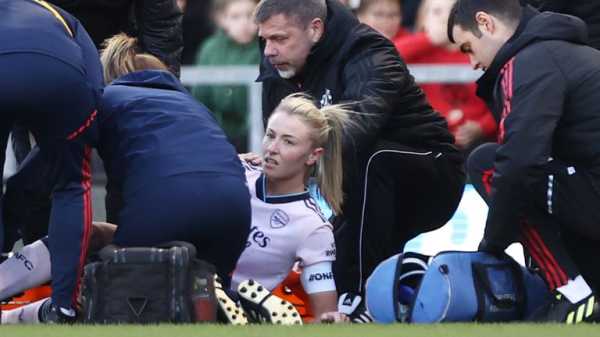
Image: England captain Leah Williamson is among many elite athletes who have needed ACL surgery
Sky Sports has already revealed that elite female footballers are six times more likely to suffer an ACL injury than their male counterparts. While the data for the grassroots game isn’t there in data form yet, the medical professionals are in no doubt that girls and young women are at a greater risk of injury.
Dr Kate Jackson is a renowned sports and exercise medicine specialist. She’s worked within football, England Netball and within high performance Olympic sports. “For 20 years we have known that there is an increased ACL injury rate in women and girls compared with men and boys. The anatomical side of things is what makes it more likely to rupture, the actual rupture is identical whether you’re male or female, it’s been overloaded.
“What other factors impact that ligament? The obvious one to mention first is there’s a menstrual cycle and that appears to have some impact on injury. There’s a fluctuation of hormones through the menstrual cycle, but it’s just not the full picture. It contributes, but we don’t yet understand.
“There’s (also) a nuanced gender issue there which needs more exploring. Is it about attitudes to girls being physically active around that age? Is it accessibility? Opportunity to stay physically active when they become teenagers, we don’t fully understand that yet. It would be correct to say there has been some gender bias, but I do think people are starting to really look at this and try to think how to counter act it and trying to counter act it.”
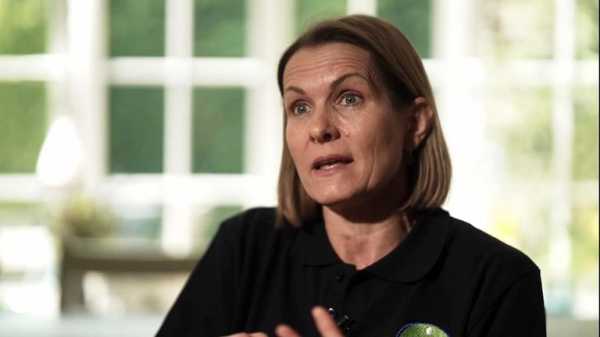
Image: Dr Kate Jackson explained why girls and women are more likely to have ACL injuries but says more resarch is needed to explain why
Speaking to Dr Jackson was enlightening. When she mentioned ‘attitudes’ she told me by that it included things like the state of a pitch, a playing surface, changing facilities and kit. But the biggest take away was that no-one is 100 per cent sure why female athletes, either grassroots or elite, are more susceptible to ACL injury. As Dr Jackson says there are so many reasons, but the clarion call was for “more research, more targeted research. Then an understanding can be formed.”
So why is an ACL such a ‘devastating injury’? Time out of the game, and probability of recurrence if rehab isn’t taken seriously, is a short answer. An ACL ruptures on a girl, boy, man or woman in a split second. Once diagnosed – which is usually pretty straightforward as most people hear a “popping” sound and struggle to walk properly, let alone run – the majority of patients will require surgery to repair or reconstruct the damaged ligament. That means going into hospital, being put to sleep by anaesthetic and having a surgical operation.
Surgical techniques have developed at an astounding rate – Davies told me he can reconstruct an ACL in about an hour. I was privileged to be allowed to watch Davies and his eight-strong team at the Royal Berkshire Hospital re-build an ACL for 15-year footballer Marley Wright.
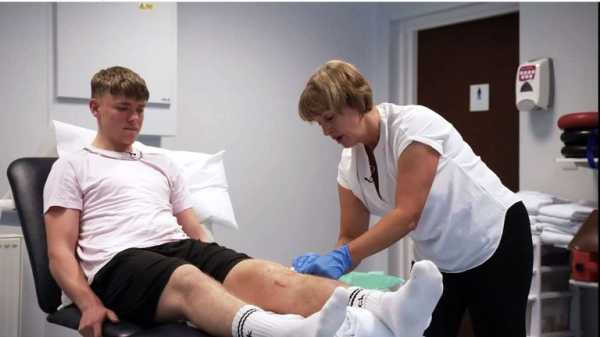
Image: 15-year-old Marley Wright is one of many thousands of teenagers having rehabilitation after knee surgery
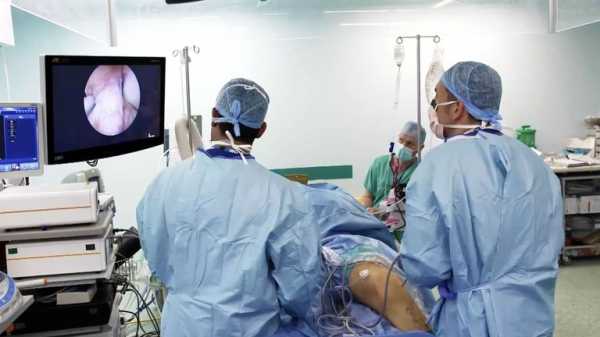
Image: Sky Sports News filmed inside surgery as medics operated on teenager Marley Wright who had ACL surgery
Marley’s ACL in his right leg just wasn’t there anymore, his rupture was so violent. My description is doing the entire operation a disservice, but simply put Davies took a graft from Marley’s right hamstring and turned it into a thick, chunky, new ACL. He used a myriad of surgical tools, drills and cameras to screw and attach the new ligament into place and while inside Marley’s knee strengthened an area to the side to provide greater protection for when the teenager gets back to sport.
And that’s the time-consuming part, getting back to sport. “You have your operation, but then you have a significant time of rehabilitation before I’d allow anyone back on a football pitch and I don’t let my patients go back to match football, rugby, netball for 12 months from the date of surgery,” said Davies, adding: “Don’t get me wrong, I love my job, I love operating, but it’s the conversations with the families and the patients. It’s an awful experience.”
Senior lead physiotherapist, Debbie Burden, works with Davies and picks up where he finishes. She’s frustrated and annoyed by the number of teenagers she has been seeing with ACL injury through sport – she told me it was “soul destroying” – but her job is to get the patient back to sport, that’s what she is passionate about. She just wants people to know that it is a long road.
“It’s really important because a lot of the patients feel that once they’ve had the operation that their knee is fixed and it is not,” she said. “In actual fact it’s an awfully long journey. It’s 12 months, you can’t rush it. If you do then the likelihood is you’ll injure yourself again or the other ACL will go under the strain.”
Now earlier I mentioned a simple, easy solution. To be clear, no one thing can prevent ACL injuries. They will still happen as there is no magic cure, but the risk of an ACL injury can be greatly reduced. The surgeons, doctors, physios and academics who are determined to lower the risk of ACL injury believe there is a simple aid. A warm-up. It’s injury prevention.
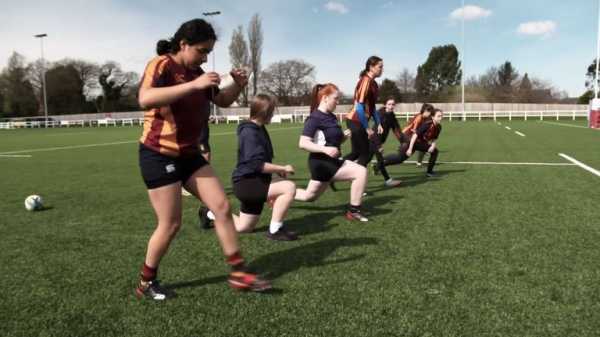
Image: A targeted warm-up programme can reduce the number of ACL injuries by over 50% according to some doctors
Will Jackson is another consultant orthopaedic surgeon, he’s regarded as one of the UK’s leading knee specialists. Again, he’s another top medical professional frustrated by the amount of teenage ACL injury he is seeing, but he’s adamant a simple generic warm-up or injury prevention programme before training or a game can have a massively positive impact. Where he is less positive is on the UK’s uptake.
“You look at Australia, you look at some of the Scandinavian countries, Netherlands, Canada. All of them have started to try and put together national programmes to deliver these warm-up programmes and in the UK this hasn’t happened. I’m slightly ashamed by the UK’s response that we are so far behind.”
But fear not because Will and all the other medics I’ve spoken to aren’t negative nay-sayers, they are doers and want to help bring about change. “Three times a week spend 15 minutes, only 15 minutes stretching – it can be split into 10 before a workout, training or a match and five minutes afterwards. It’s not complicated, you don’t have to have a physio degree to learn how to do the warm-up. There are ways to just to try to gradually ingrain this into normal practice,” Jackson said
So, what’s the impact then? I asked Davies how much a warm-up can reduce risk by? “Fifty-70 per cent … it’s so simple,” he replied.
For such a simple thing as taking injury prevention seriously and factoring in a simple warm-up, that 50-70 per cent risk reduction is an astonishing figure. And many grassroots coaches that are giving up their time often without any payment do know the benefits of warming-up.
Basketball coach Shaun Romeo helps look after the youth set-up at the Reading Rockets. “Big concern for us, we have to make sure all the kids are stretched properly and make sure they are well oiled before they get on the basketball court because so many injuries happen, sometimes just before a warm-up where people haven’t stretched properly. I’ve seen it and experienced injuries from not warming up properly, some of my friends and teammates. It’s key to warm up,” he said.
Taylor, the U11s coach, added: “I know how important it is to prepare yourself for a match, for a training session. What I’m trying to instil into these young kids now who are 11 years old is really the preparation of it. Really you have to make it fun, they need to engage with it, but generally it’s just getting into a routine and understand why you are doing these things and that it is for their benefit.”

Win £250,000 with Super 6!
Another Sunday, another chance to win £250,000 with Super 6. Play for free, entries by 4:30pm.
Sourse: skysports.com
